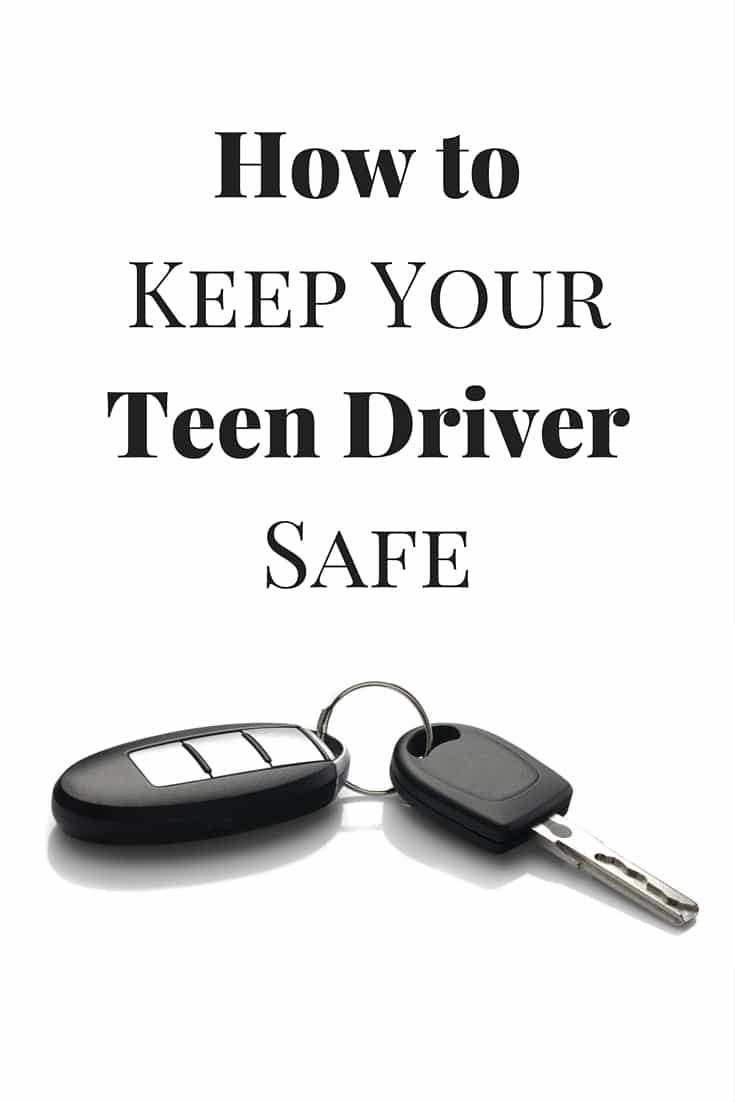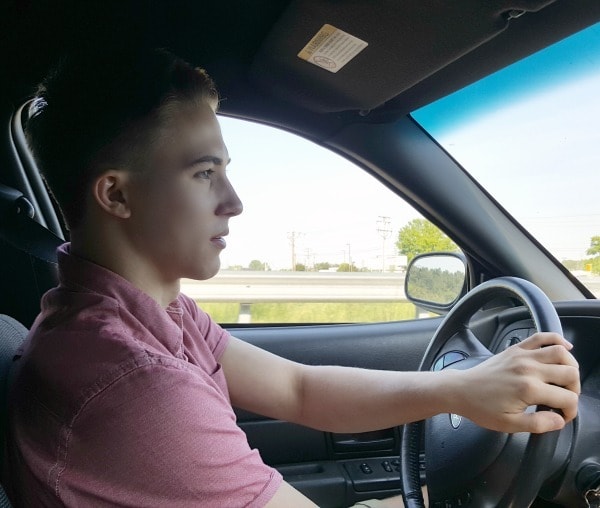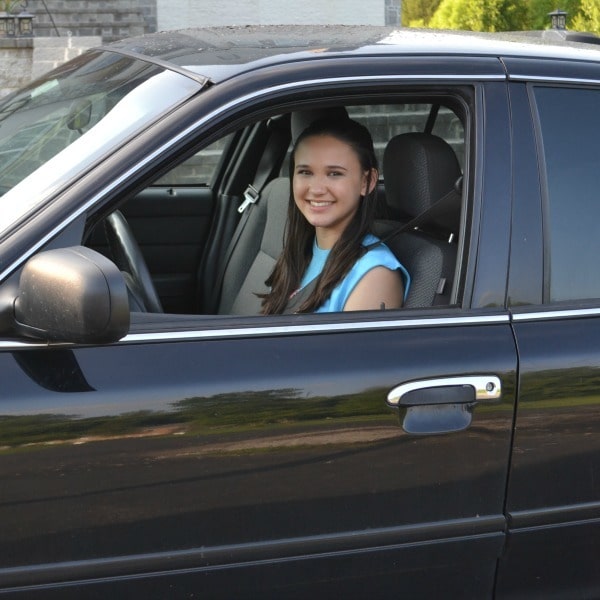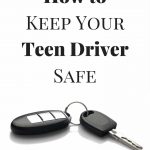This is a paid public service announcement in observance of “Global Youth Safety Month” written on behalf of SheSavvy and The National Safety Council (www.nsc.org). Opinions and personal experiences shared in the post are my own.
When my oldest son got his learner’s permit, I was part excited (a new milestone!), part melancholy (my baby is growing up!), and part terrified (my son is going to be on the road with all the crazy drivers!). I’m now teaching my second child, my oldest daughter, to drive and all of the same emotions from three years ago are back in full force.
As parents, we are happy for our children to grow and learn and become more independent, but it also makes us confront the many dangers that await them once they are out on their own. Thus, the older they get, the more we focus on shielding them and the more we work to teach them to foresee, prevent, and cope with difficulties. Behind the wheel of a car is one of the most critical places to instill these lessons. Here are some facts and tips to help you keep your teen driver safe.

Teen Risks
Inexperience
You have good reason to be concerned about your teen’s safety on the road since car crashes are the #1 killer of teens. Contrary to what you might believe or have heard, teen drivers aren’t involved in more crashes because they take more risks, but because they lack experience.
When you are teaching your teen to drive you will see many signs and effects of this inexperience. Actions that are second nature to us (e.g. signalling to change lanes, scanning all sides of the car for other vehicles, braking gradually to come to a complete stop) require a lot of concentration and effort for a new driver and often they can only manage one task at a time.

Once teens get comfortable driving (due to several training hours behind the wheel), their confidence might outpace their experience. Due to their lack of driving experience, they don’t realize all of the situations that can occur (e.g. a distracted driver approaching from the rear of the car that can’t stop on time, the increased risk of hydroplaning on wet roads, a driver in a hurry that cuts in front too early). I try to use every opportunity when I am in the car with my teen, regardless of who is driving, to point out potential risks, highlight other drivers’ behavior, and discuss ways to avoid or recover from these situations.
Passengers
Aside from their lack of driving experience, the biggest threat to teen driver safety is their social nature. They love to be with their friends, but it’s having other passengers in the car that skyrockets the chances that a teen driver will be involved in a fatal crash.
- One passenger increases the risk of a fatal crash by 44 percent.
- Two passengers doubles the risk of a fatal crash.
- Three or more passengers quadruples the risk of a fatal crash.
It is unrealistic to expect a teen driver to always drive solo. One of the reasons teens are excited to get their driver’s licenses is to make it easier to get together with their friends. To keep them safe, make sure they understand the risks and encourage them to limit distractions.
With my son, we required him to learn to drive a manual transmission. Driving a stick shift demands the driver’s attention so it was easier to ensure that his focus would remain on driving. Obviously, this solution isn’t right for everyone. Other things you can do to help limit distractions is to have a bare bones vehicle – no bluetooth technology, no elaborate stereo equipment, no complex display panels. My daughter was terrified of learning to drive a stick shift so instead we taught her on a stripped down Crown Victoria that used to be an undercover police car. Bonus: other drivers slow down whenever they see this car coming!

Night Driving
Also, due to decreased visibility, driving at night is more dangerous for teens. Most fatal nighttime crashes involving teen drivers happen between 9 pm and midnight. On school nights, it’s easier to enforce a 9 pm curfew. On weekends, I tried to mitigate my son’s risk by establishing a protocol in lieu of a strict protocol. I was concerned that if he was racing home to make it back by curfew, he’d be tempted to speed or drive less cautiously. So, instead we set a more relaxed curfew (try to be home around 11:30) and required him to text us when he was leaving for home. This way we knew exactly when to expect him and speeding was disincentivized since if he got home too quickly we would question him as to how he had arrived so fast.
Buckling Up
Finally, more than half of teens killed in car crashes are not wearing a seatbelt. Although I believe most teen drivers habitually buckle up, I know from my personal observations that teen passengers are less diligent. Make sure you enforce a strict seatbelt policy whenever you have other passengers in your vehicle and set an example by always buckling up when you’re a passenger in someone else’s car.
Parenting a Teen Driver
In addition to the tips I shared in the section above, there are other ways parents can keep their teen drivers safe. Regardless of what your teen says or how he or she acts, the fact is that parents are the #1 influencer on teens’ driving behavior. Your teens will model your behavior so you have to back up your advice with setting the right example. Don’t lecture your teen about the dangers of texting and driving but then text them a message on your drive home. I admit that I am horrible about this! I am constantly checking my messages when I’m sitting at a red light, thinking that I’m “being safe” until my daughter has to tell me that the light has turned green because I didn’t notice in that “second” I was looking at my phone screen.
Keep Teaching Your Licensed Teen
One of the best things you can do to keep a teen driver safe is to remember that teens still have a lot to learn AFTER they have their driver’s license in hand. Continue to point out potential problems, talk through different driving scenarios, and encourage good habits every time you are in the car with your teen.
Establish Rules
A driver’s license grants your teen additional independence, but you are still the parent and your teen is still the child. Set rules and enforce them. I won’t dictate to you which rules make sense for your family but some examples are:
- Put phone on silent and keep out of sight while driving
- No more than one other passenger in the car
- No driving after 11 pm
- No travel on a specific road or highway
Learn More
I’m a big believer in education and research to help guide informed decisions. You can find more information on teen driver safety at DriveitHOME.org. They have dozens of resources including videos like the one I shared earlier in the post, a digital driving coach, a new driver contract, and posters and infographics like this one:
Parents! Stay involved with your teen’s driving experience. Even AFTER they get their license, practice with them and set rules in your house that are stronger than the state’s GDL law. Help protect other teen drivers by sharing Steer Your Teen Down the Right Road with other parents of teen drivers.


